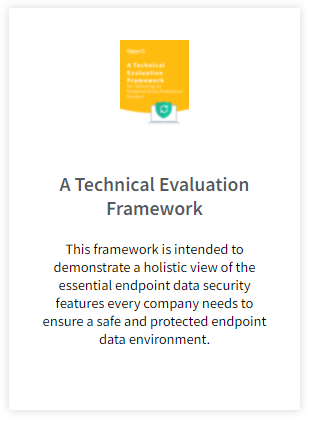The best way to protect yourself, your users and your business against ransomware is by setting up a proactive defence. The ransomware statistics paint a frightening picture for anyone in charge of IT: In Q3 2016 alone, 18 million new malware samples were captured. Source: Panda Labs What that means is that the criminals…
If you don’t have a centrally managed and automated data backup solution your enterprise will face GRC penalties and the pain of data loss
What, in your opinion, constitutes a massive breach, or loss, of data?
Is it Sony’s recent faux pas where data theft affected over 77 million users, resulting in serious damage to the company’s reputation and possible future loss of revenue as Playstation users threaten to dump the gaming console in droves?
Is it the theft of South African journalist, Max du Preez’s, laptop containing a near-completed manuscript of a new book about Nelson Mandela, or perhaps you recently lost an important file – just one document but important enough to damage your reputation at work, forcing you to spend hours trying to recreate it and/or perhaps, even, costing you a lot more than you bargained for?
Fact of the matter is that EVERY data breach or loss is devastating in some shape of form.
• Fact is: IT has been looking at the problem of endpoint user data protection from the wrong side of the data backup and recovery universe.
What are the statistics?
Accurate figures for South Africa are a scarce thing.
There is no official body monitoring cost to company of each laptop stolen, or cost in terms of data breaches. In order to gain some insight into local market conditions, Cibecs commissioned a data loss survey in 2010 – with some interesting statistics gathered from the 250+ businesses and enterprises taking part.
Data loss survey snapshot:
• Nearly half (46%) of companies rely on a data backup policy (instructing users to backup to a server or external device) for endpoint user data protection.
o Ironically, the failure of users to follow company policy was also highlighted as the main cause of data loss.
• 68% of respondents were unsure if their company would be able to recover user data in case of data loss
o But 95% of companies believe that information management is essential to business success.
The full data loss survey reports is available for download from the Cibecs website but, clearly, there is a massive difference between what companies know to be of critical importance and the way in which IT addresses the issue of data on endpoint user devices.
On the edge of darkness?
In their latest report on endpoint user data backup (ID #: G00211731), Gartner highlights the issue of endpoint user data security as one of the major problems faced by IT today.
One of the key problems being that IT still looks at user data protection in the traditional sense, meaning from the centre out, instead of from the edge, inward – with the main areas of risk and exposure residing on endpoint user devices such as laptops and desktops.
Removal of user involvement is key
The reality is that IT needs to implement automated data backup- users should not (at all) be involved with the security of business critical data because as certain as death, taxed and data loss, users will:
1. Forget or not know how to backup their data
2. Not do it because it takes time
3. Refuse to do it because they do not want to save sensitive information on the server where it could be accessed by someone else.
From the ground up. Focussed on the edge.
The kind of endpoint user data protection solutions required to protect business critical data in the modern, mobile, world are endpoint device focussed – developed from the ground up to provide IT with a simple, reliable and rapid response tool to backup and recover data from laptops, desktops and other devices at the edge of the data universe.
To enjoy key operational benefits whilst avoiding future data loss/data breach incidents, IT needs to find products and services that offer functionality specific to endpoint devices, paying especially close attention to features that offer IT infrastructure and CPU optimisation, central management, data reduction and encryption capabilities, as well as those that remove user involvement in the backup process altogether.
With Gartner predicting that data flow into enterprises will grow by 650% over the next five years, a shift of focus and approach is required when it comes to the security of business critical data.
That shift requires a visit to the edge, today.
FEATURED POSTS
IT Managers: How to Protect Your Users Against Ransomware
The best way to protect yourself, your users and your business against ransomware is by setting up a proactive defence. The ransomware statistics paint a frightening picture for anyone in charge of IT: In Q3 2016 alone, 18 million new malware samples were captured. Source: Panda Labs What that means is that the criminals…
Cibecs Joins Silicon Valley Top 20
Cibecs Joins Silicon Valley Companies to be Listed on Top 20 Most Promising Storage Solution Providers Cibecs, a leading South African endpoint backup, protection and security solution, has been recognised as one of the 20 Most Promising Storage Solutions by CIO Review. The list, compiled by industry insiders, highlights leading global technology providers that offer effective…
4 Signs You Need a New Endpoint Data Backup Solution
With more workers depending on laptops it is more important than ever to ensure that the work protected and stored on those devices is backed up and protected. Forrester Research says that 45% of corporate executives don’t follow policies for data use and handling. Underlining how at risk almost half of a business’s data actually…












